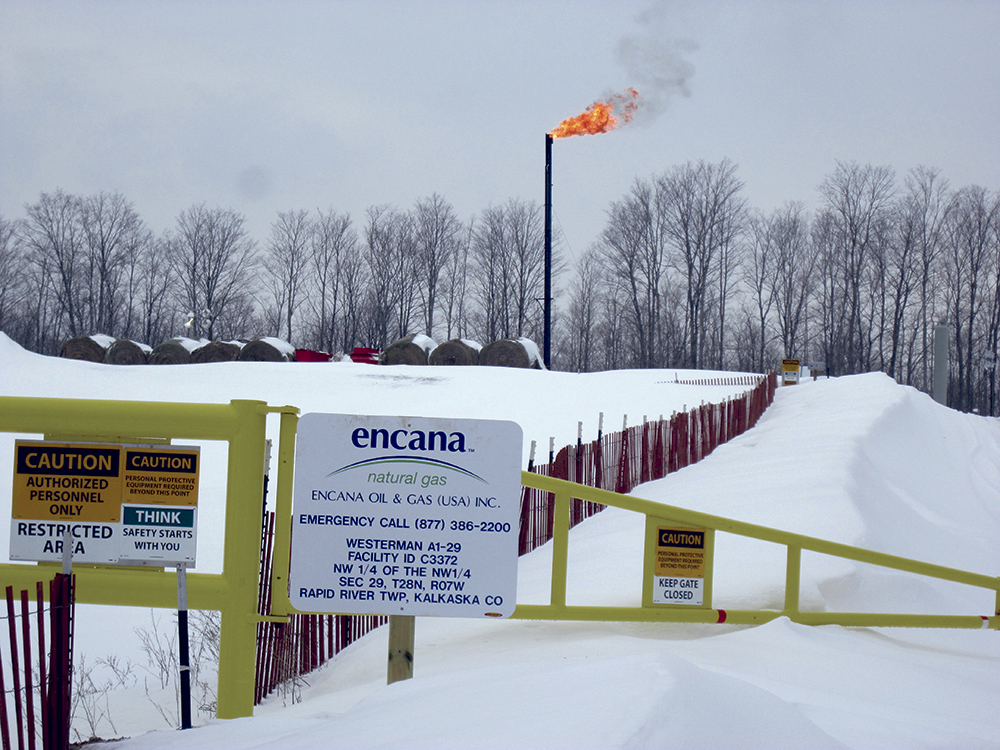A couple environmental advocates from Beulah were recently honored for their impassioned grassroots efforts.
Joan Wolfe was inducted into the Michigan Environmental Hall of Fame during a ceremony at the Gerald Ford Museum in Grand Rapids on April 10. Wolfe founded the West Michigan Environmental Action Council and coordinated the passage of the landmark Michigan Environmental Protection Act of 1970. She was also active in the passage of the National Environmental Policy Act and the Inland Lakes and Streams Act of 1972.
In 1973, she was appointed by former Governor William Milliken to the Michigan Natural Resources Commission, the first woman on such a state commission, and eventually became its chair. She was also a member of the first Natural Resources Trust Fund Board. Joan Wolfe is author of the book Making Things Happen: How to be an Effective Volunteer (Island Press, 1991), which is based on her experience in the environmental movement and outlines the basic skills which volunteers need to make a stronger impact.
The induction ceremony in Grand Rapids honored Michigan environmental stalwarts including: Norm Spring for leading the fight to ban the pesticide DDT in Michigan; the late Tom Washington for suggesting that Michigan put a 10-cent refund on bottles and cans; Don Inman for conceiving of the Michigan Natural Resources Trust Fund, and Dave Dempsey for authoring six conservation books. The honorees waxed poetic about previous environmental victories, but also foreboded about current and future battles, such as the struggle over fracking for oil and gas in Michigan’s shale formations. Here in Benzie County, a new generation of environmentalists is organizing to preserve Beulah’s Cold Creek.
A month earlier, Jeannette Feeheley’s 13-year-long struggle to both protect the Sleeping Bear Dunes National Lakeshore from development and preserve the public’s access to it triumphed. President Obama signed the Sleeping Bear Wilderness bill into law on March 13 nine days after it passed the House of Representatives. The bipartisan legislation was shepherded by Republican Congressman Dan Benishek and Democratic Senator Carl Levin, representing a rare across-the-aisle effort in Washington, D.C.
“I’m ecstatic that we got it past the finish line,” Benishek told the Current’s sister publication, the Glen Arbor Sun. “This is the first wilderness type bill that has passed in five years. It’s a model for how these types of bills should be done in the future because it’s based on what local citizens want. This was developed in the area to make sure that the Park remains open.”
The wilderness bill, a rare example of popular legislation with bipartisan support, designates approximately 32,500 acres of the Sleeping Bear Dunes National Lakeshore as “wilderness” areas. Just as important to both citizens and lawmakers, the bill protects county roads, historical structures, and access to recreation and enjoyment of Lake Michigan. The right to hunt and fish in designated wilderness areas is specifically protected in this legislation.
Here’s how Feeheley got involved: a 1981 Wilderness Study by the National Park recommended that the Sleeping Bear Dunes National Lakeshore, which 33 years ago was still in its infancy, attempt to acquire all county roads within the Park and zone them as “wilderness”, thereby keeping out all motor vehicles and heavy foot traffic from such cherished Lake Michigan beaches as Port Oneida, Good Harbor and Esch Road.
The full implications of that Wilderness Study didn’t surface until 2002 when Lakeshore officials proposed a General Management Plan (GMP) that, in keeping with the ’81 recommendation, would close county roads to the public, potentially demolish historic structures such as barns, and also push fishermen and hunters off the land. By 2002, though, communities surrounding Sleeping Bear had grown into booming destinations for tourism and recreation and were largely dependent on those beaches, those iconic symbols, and those resources. Shutting much of the Lakeshore to those public uses would have dealt a devastating blow to our towns and townspeople.
Reaction to the 2002 GMP was swift and angry. Public meetings at Lakeshore headquarters in Empire were swarmed by the impassioned masses; then-Park interpreter, and Frankfort resident, Bill Herd told the Glen Arbor Sun that the Lakeshore’s push for wilderness was being done behind the backs of the public, and without the basis of any concrete scientific studies; meanwhile, Feeheley and other concerned citizens formed the advocacy group “Citizens for Access to the Lakeshore” to fight the Park’s General Management Plan.
As Feeheley pointed out during her testimony to Congress last summer, “this Park had not originated with vast amounts of never-used or never-privately-owned land, but of land that had been mostly held and used by small, private landowners for two centuries … In order for the Park to become a reality, most of those private owners had to be removed from their land after the 1970 enabling legislation was passed.” In other words, the Park was trying to turn back the clock and create wilderness where wilderness hadn’t existed for many decades.
“The bill is a win/win for proponents of wilderness and conservation as well as proponents of public access and varied recreation usage,” the Beulah native concluded. “It is not a bill where the proponents give grudging, reluctant support, feeling compromised and unhappy about something. Rather, this is a bill wherein almost everyone involved has emerged quite satisfied.”
Photo of a Kalkaska natural gas well by Jacob Wheeler.




